Art World
How Curator Sara Raza’s New Show Smuggles Inconvenient Truths Into the Guggenheim
The exhibition showcases work from the Middle East and North Africa.
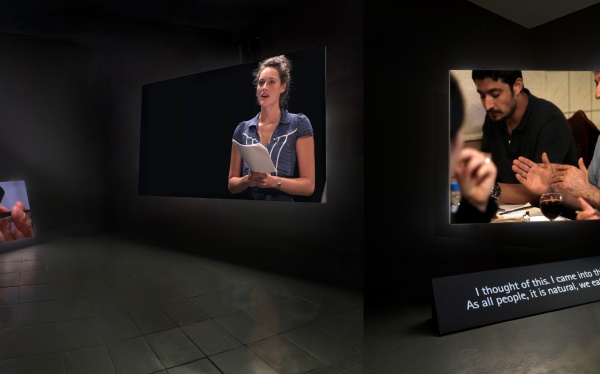
The exhibition showcases work from the Middle East and North Africa.

Laura van Straaten

When Sara Raza went about curating the exhibition “But a Storm Is Blowing from Paradise: Contemporary Art of the Middle East and North Africa,” which opens April 29 at the Guggenheim, she was looking for artwork rooted in that region as she has done for the many other shows she’s organized over the past decade for a diverse array of international cultural institutions. But this one is a little different: all of the work she selected is entering the collection of the Guggenheim, in perpetuity.
“We had a mandate to study what was already in the collection and then to look at what is needed,” Raza told artnet News recently over lunch at a Lebanese restaurant in New York.
The exhibition is the third iteration of the UBS MAP Global Art Initiative, a program anchored at New York’s Guggenheim Museum and designed to diversify the museum’s collection and increase exposure and access to contemporary art from culturally rich regions of the world. (The two previous MAP exhibits celebrated work from Southeast Asia and Latin America.)
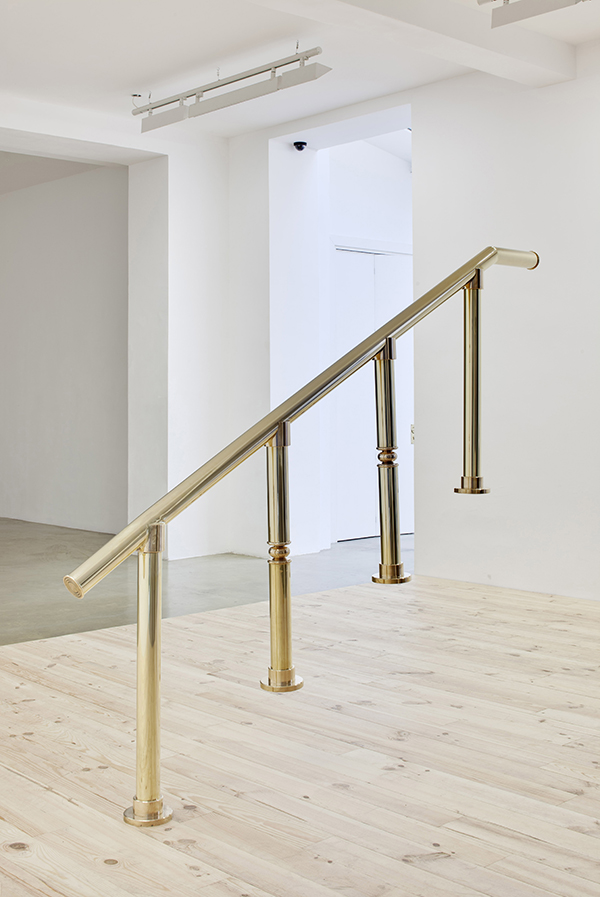
Hassan Khan , Bank Bannister (Banque Bannister) (2010). Solomon R. Guggenheim Museum, New York, Guggenheim UBS MAP Purchase Fund 2015. © Hassan Khan
“It was quite a challenge to bring together a study of these places that are so complex so I wanted to be driven by ideas as my organizing principle,” she said, “I didn’t go country by country…. With the exception of Iran and Turkey, all of the countries featured here have gone through some form of colonial treatment in recent centuries so that is an important theme.” The exhibition explores narratives of origin, ideologies of architecture and—most timely—the politics of migration.
“But a Storm” forms an intricate jigsaw puzzle, representing a fragmented and shifting geographical region, according to Raza’s statement of intent. “The works explore how the past informs the present,” she said, and employs a curatorial approach that “‘smuggles’ certain inconvenient truths about history and memory into the realm of the exhibition, articulating the value of artistic strategies within the broader context of contemporary culture in the Middle East and North Africa.”
Some inconvenient truths about history and memory can be found in an unusual installation by Beirut-born artistic duo of Joana Hadjithomas and Khalil Joreige. Their work, Latent Images (2015), which debuted at the 56th Venice Biennale in 2015 and only a portion of which is in the show, comprises 354 copies of printed artists’s book installed along 177 metal shelves, along with a 120-minute video. The piece plays with the process of documentation as a way to represent trauma, in particular the artists’ personal experience of the civil wars in Lebanon.
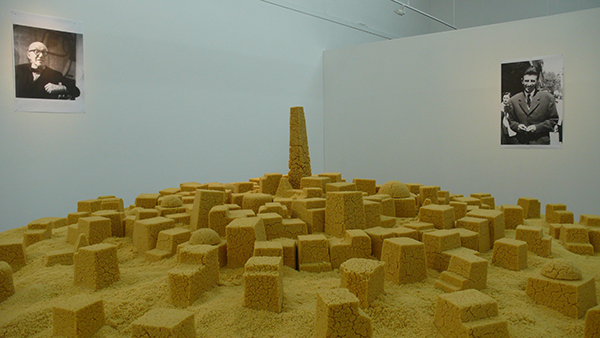
Kader Attia , Untitled (Ghardaïa) (2009). Couscous, two inkjet prints, and five photocopy prints; Solomon R. Guggenheim Museum, New York Guggenheim UBS MAP Purchase Fund 2015 © Kader Attia Installation view: Looking Inside-out, Kunstnernes Hus, Oslo, February 20–April 29, 2009. Photo: Kader Attia
That work’s centerpiece is a book containing rolls of film that purport to document the war years. But the film is not screened; instead, its scenes are described in writing by a fictitious photographer named Abdallah Farah who cannot contend with how Beirut has been transformed by war. (For New Yorkers, this work will surely call to mind the preoccupations of Lebanese artist Walid Raad, whose massive solo show debuted last fall at MoMA.)
“Joreige and Hadjithomas were already in the collection,’ said Raza, “but I wanted to show an evolution in their practice and also to support them as artists at later stages of their careers.”
Another highlight is Tunis-born Nadia Kaabi-Linke’s monumental Flying Carpets (2011), a suspended stainless steel grid that casts geometric shadows. It is modeled after a central bridge in Venice where undocumented migrants often Arab and African origin use rugs to display counterfeit goods for sale. Then there’s Berlin-based Kader Attia’s Untitled (Ghardaïa) from 2009, which renders in couscous the ancient Algerian city that inspired the architecture of Le Corbusier in the 1930s.
The show also features works by Tel Aviv-born Ori Gersht; Tehran-born Abbas Akhavan; Cairo-based Hassan Khan; Beirut-born Ali Cherri; Emirati artist Mohammed Kazem; Saudi artist Ahmed Mater; Kuwaiti-born and Amman-based Ala Younis; the Cairo-born artists Susan Hefuna and Iman Issa (her sculptures at last year’s Sharjah Biennale were standouts); and Tehran-born Dubai-based artist Rokni Haerizadeh whose complex 2014 work on paper lends the show its name.
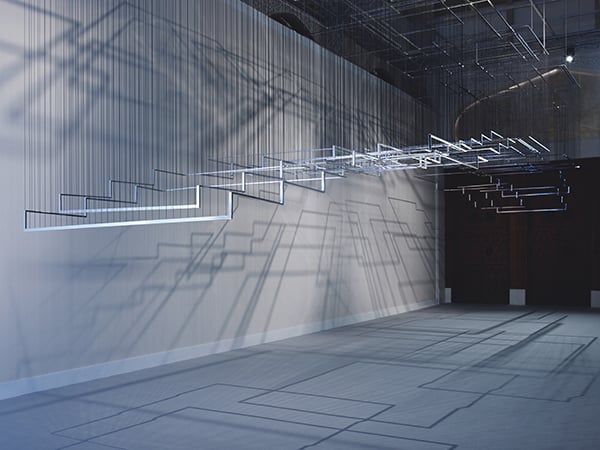
Nadia Kaabi-Linke , Flying Carpets (2011), Stainless steel and rubber (First edition commissioned by the Abraaj Group Art Prize) Solomon R. Guggenheim Museum, New York, Guggenheim UBS MAP Purchase Fund 2015 © Nadia Kaabi-Linke Installation view: The Abraaj Group Art Prize, Madinat Jumeirah, Dubai, March 16–19, 2011 Photo: Thomas Brown
“This is a dream project for a curator,” said Raza, a doctoral candidate at London’s Royal College of Art who is at work on a book about “punk orientalism.” Raza was nominated for the two-year curatorial residency by a panel of experts including Okwui Enwezor, curator of the 57th Venice Biennale and director of Munich’s Haus der Kunst, and Sam Bardaouil, who co-curated Lebanon’s pavilion in the 56th Venice Biennale in 2013 and co-founded the renowned New York-based curatorial platform Art Reoriented.
The exhibition, which is heavy on installations—many comprising painting, photography, sculpture, video and work on paper—has been mounted in two of the Guggenheim’s “tower” galleries, rather than in the curving ramps of Frank Lloyd Wright’s iconic rotunda.”
All of the works in “But a Storm” were made in the last decade and tell what Raza calls “a contemporary story.” Notably, Raza made sure that artwork by women made up half the exhibit: “We wanted to keep a balance between men and women and so that ratio was a conscious decision.”
As with all MAP shows, this one will travel to the focus region after its run at the Guggenheim. In 2017, it opens at the Pera Museum in Istanbul, but the context will be quite different. The Pera Museum was established by the Suna and Ínan Kıraç Foundation in what was once the famous Bristol Hotel in the historic Tepebaşı quarter of the city.
“I love that city and think it’s a perfect place for this show,” said Raza, “because it’s a crossroads of East and West and it has such a well-developed contemporary art scene.”
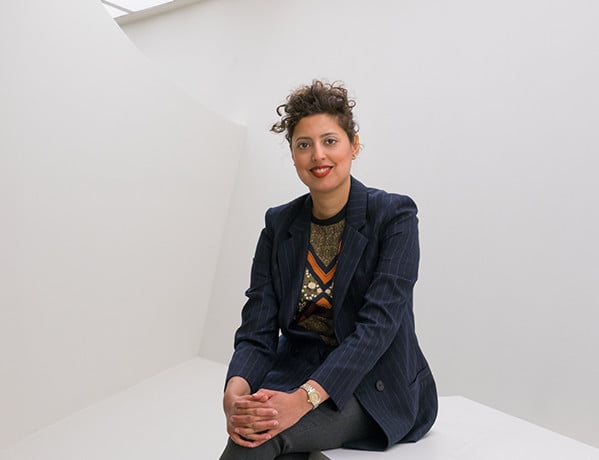
Sara Raza Guggenheim UBS MAP Curator, Middle East and North Africa © Solomon R. Guggenheim Foundation, New York , Photo: David Heald
For Raza, the most rewarding part of organizing this show has been her role in bringing geographic, political, social and art histories into the canon. “Because these works have entered the Guggenheim forever, future generations of curators are going to be working with these objects that have now transcended their geographies and will be studied on their own merit,” she said. “That is the most exiting thing: to have your fingerprints all over such an important collection and on art history itself.”
“But a Storm Is Blowing from Paradise: Contemporary Art of the Middle East and North Africa,” is on view April 29-October 5, 2016 at the Solomon R. Guggenheim Museum, 1071 Fifth Avenue, New York.